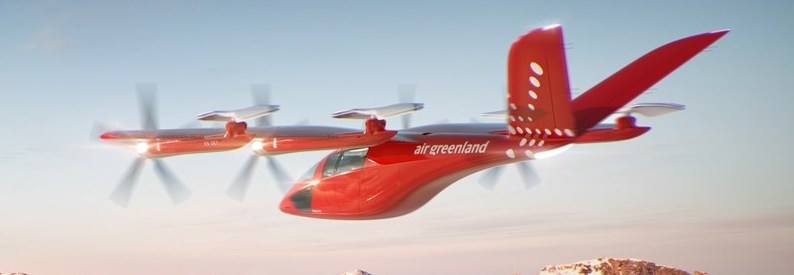Air Greenland, Avolon ink eVTOL deal

Air Greenland (GL, Nuuk) has committed to purchasing or leasing a fleet of Vertical Aviation (MDB, San Antonio Int’l) VX4 eVTOL aircraft from Avolon, making it the first European airline to join the Irish lessor’s programme for electric vertical take-off and landing aircraft.
The companies in a statement announced they would form a working group to assess the commercialisation of zero-emissions air travel in the Greenland region and to identify local infrastructure and certification requirements for eVTOL aircraft.
The size of Air Greenland’s VX4 fleet would be defined at the conclusion of the working group’s assessment of the scale of the market opportunity.
Air Greenland Chief Executive Officer Jacob Nitter Sørensen said the announcement marked the start of the airline’s long-term sustainability journey. “In Greenland, we see the effects of climate change every day and, as a company, we want to be at the forefront of the climate revolution. The VX4 aircraft will have many uses for Air Greenland.”
In June 2021, Avolon ordered 500 VX4 eVTOL aircraft from Vertical Aerospace, valued at USD2 billion. Since announcing that order, Avolon has placed 250 VX4 aircraft with GOL Linhas Aéreas Inteligentes (G3, Sao Paulo Congonhas) and Grupo Comporte in Brazil, up to 100 aircraft with JAL – Japan Airlines (JL, Tokyo Haneda), and at least 100 aircraft with AirAsia (AK, Kuala Lumpur Int’l). Avolon has now placed up to 90% of its initial order book for the type.
The VX4 will accommodate four passengers and one pilot and will be able to fly over 160 km at up to 321km per hour. The aircraft will be near silent in flight and will have zero operating emissions.
State-owned Air Greenland currently has a fixed-wing fleet of one A330-200 and one A330-300 each; one DHC-8-200 and six DHC-8-Q200s, according to the ch-aviation fleets advanced module. It expects delivery of one A330-800N from Airbus in the final quarter of 2022.
The airline also operates a Beech (twin turboprop) King Air for medical evacuations and 17 helicopters of various types for mineral exploration, heliskiing, sightseeing, scientific expeditions, search and rescue, and to maintain telecommunications infrastructure.
